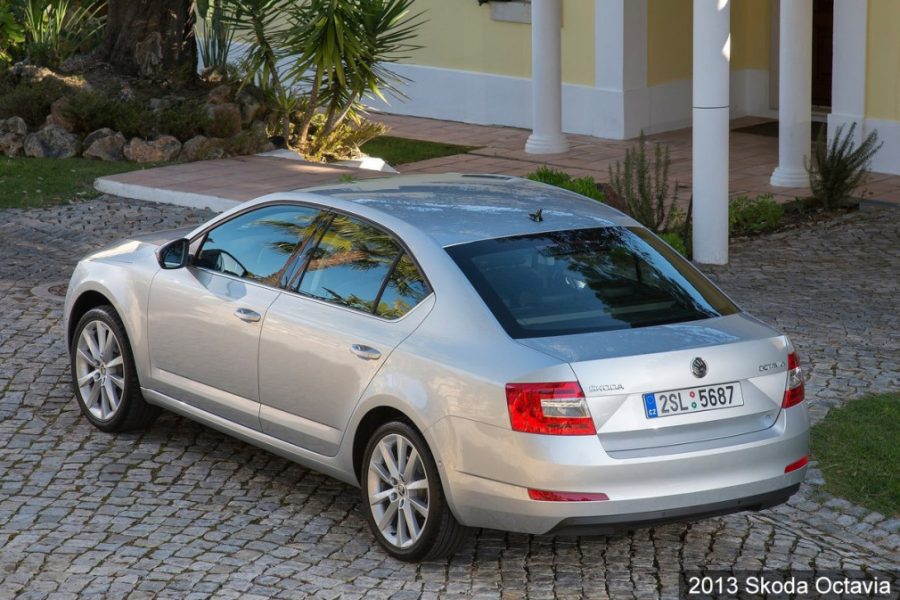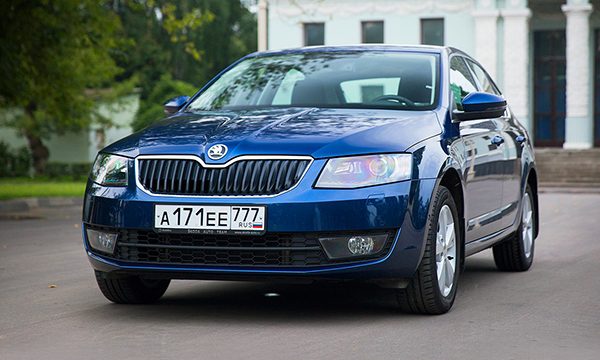
Test drive Skoda Octavia
Fifty years ago, the owner of Octavia would have considered an ice scraper attached to the gas filler flap stupid overkill, but now it is with the help of such trifles that the manufacturer can reach the consumer ...
The first is to the right and forward, the rear is in the strictly opposite direction, where the second is on modern machines. But this is at the lever on the floor, and if it is located on the steering column, it is even more difficult: to turn on the first "poker" you need to push it away from you and up. Tight, completely insensitive grip, endlessly smeared reactions to gas (and we also criticize the delays of modern "electronic" accelerators) - playing with the pedals on a 1965 Skoda Octavia to catch the gripping moment is not so easy. The speedometer shows a little over 40 km / h, and the car is already asking for fourth gear. To gain more than 60 km / h is scary: there are no booster brakes, a thin "empty" steering wheel and protracted rolls in corners. Smooth running? To stay in the strip.
Small, flat seats can hardly fit people with a height of slightly above average. There is only slightly more space behind than in the Oka. Scarce mirrors show only the edge of the sky, there is nothing to grab onto, and there is no seat belt at all. Reliability? The owners from the Czech club of fans Octavia assure that the car had to be repaired often even with low mileage. By the way, they were still engaged in transferring the gear lever from the steering column to the floor - the original mechanism turned out to be too capricious.
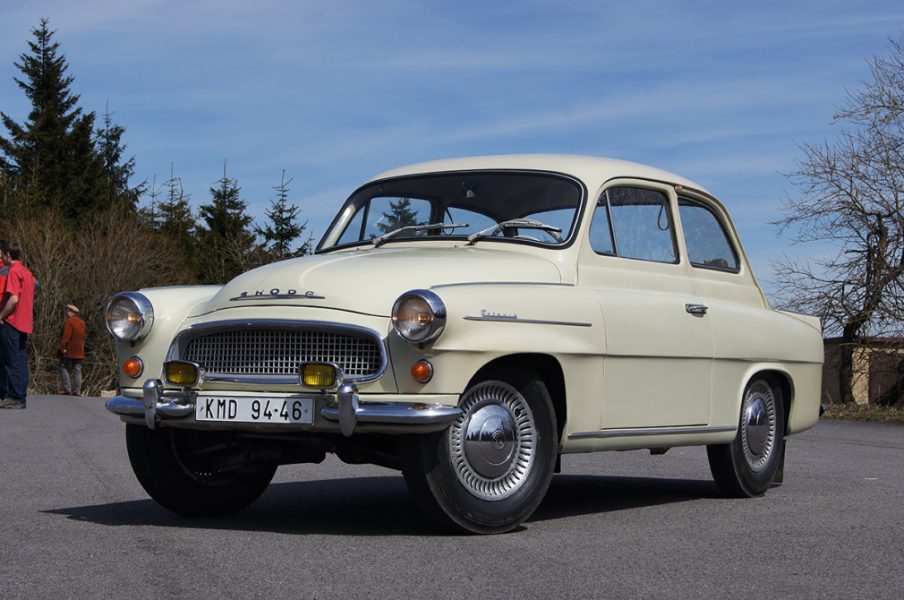
The half-century chasm between technologies is especially well felt when driving a car that is drawn on a computer, calculated in percentiles and equipped with the verified precision that only German engineers or well-trained Czech engineers are capable of. Fifty years ago, the owner of Octavia would have considered an ice scraper attached to the gas tank flap as a stupid excesses, but now, when the issue of shifting the gear lever has long ceased to exist, it is with the help of such trifles that the manufacturer can reach the consumer. In a world where technology has long since become almost perfect, the philosophy of simple and clever things works again.
For example, a sensor of a media system that reacts to the approach of a hand and enlarges the icons on the screen, supplying them with signatures. A charming thing that turns a soulless mechanism into a system with feedback and a friendly interface. Or standard corners with Velcro for securing cargo, which are neatly attached to the sides of the side niches of the trunk, and even nets for securing cargo of any shape in the trunk - potatoes that have fallen out of the store package will never again roll on the floor of the compartment. There are so many nets and hooks that it is impossible to even count the number of possible trunk configurations. The consumer himself forms the space, adjusting the car for himself. Instead of adapting to it, struggling with the inconvenience of compromise technical solutions.
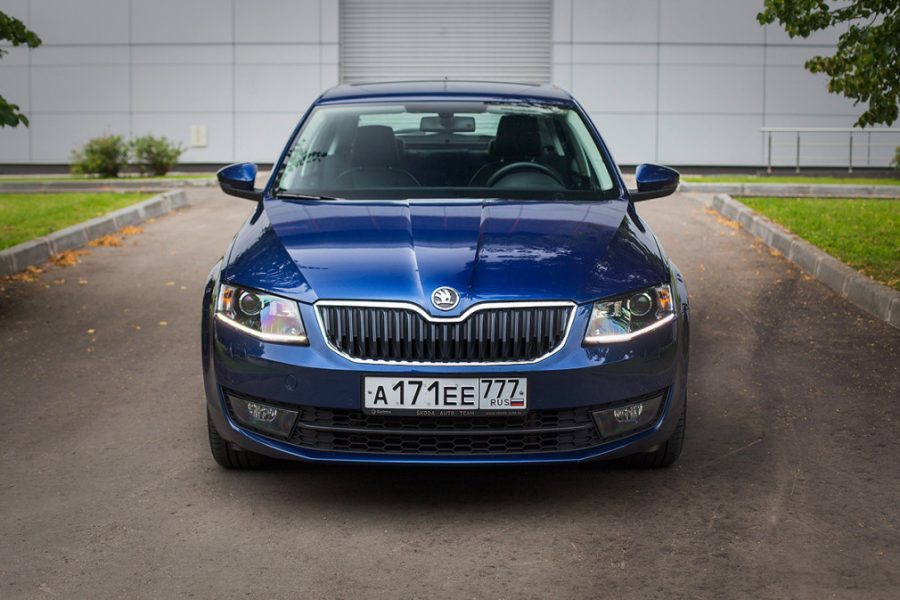
Comfort and order in the third generation Octavia is standard. Strict curly surfaces look modern and fashionable, and the quality of finishing materials will satisfy even a very fastidious passenger. There is not a single defiantly stiff or slippery detail, the decorative inlays are tastefully selected, and the efforts on the buttons and levers are perfectly calibrated.
If you turn off the red warning lights that appear when the ignition is turned on, nothing annoying will remain in the devices. The graphics of the Columbus media system, which is available only for a surcharge, also want to be called calm. Its interface is well thought out, and the screen accepts swiping gestures and even "pinching" - for example, to zoom the navigator map.
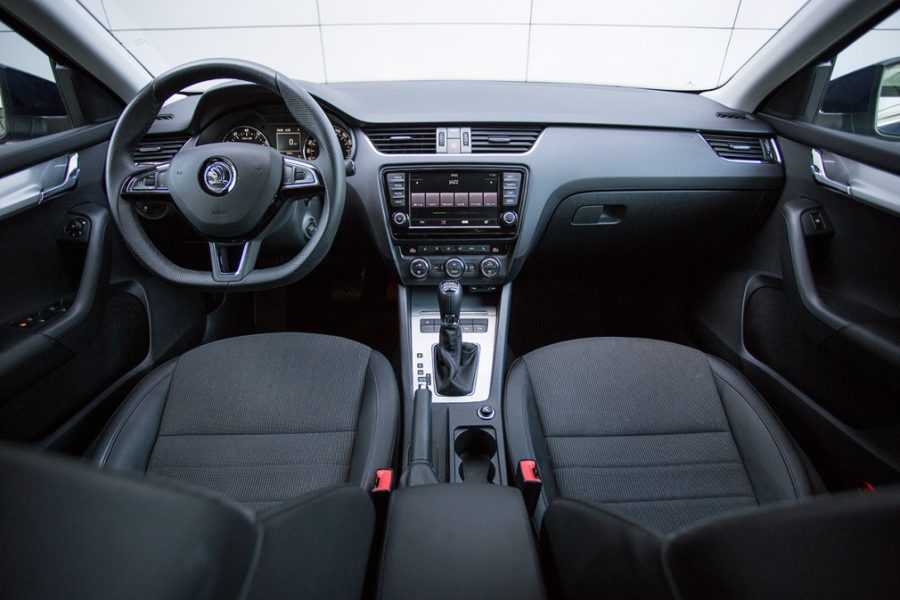
It seems that every single one of the Octavia's designers and engineers has taken a technical aesthetics course with success. It is necessary to correct it yourself only the result of the work of the automatic valet, and even then if the driver is a perfectionist, and the neighboring cars are crooked and far from the curb.
Those who find this approach boring should take a quick look at the engine lineup. In addition to the purely Russian version with a 1,6-liter naturally aspirated engine, the Octavia is offered only with turbo engines, the most powerful of which (excluding the RS version) develops 180 horsepower. The 1,8 engine is the same mandatory attribute of all modern generations of Octavia, like the emblem on the nose of the radiator grill. In its current version, the 1,8 TSI develops the same power that the first generation Octavia RS once had. And the luck is about the same. A vigorous, biting acceleration in the "throttle to the floor" mode with a pronounced pickup after 3000 rpm and excellent traction from low revs. Skoda dealers ask a lot for the dynamics at the hot hatch level: prices for a liftback with a 180-horsepower engine and DSG start at $ 14.
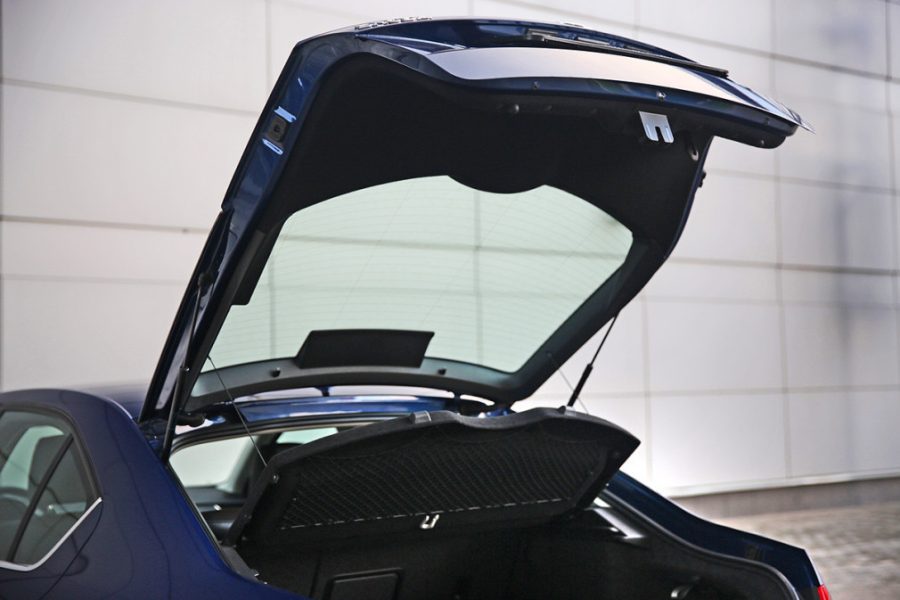
It is a pity that the third Octavia is not offered with a hydromechanical "automatic", which until recently for our market was equipped with cars of the second generation. The DSG robot doesn't waste horsepower, but when paired with a turbo engine, it works too impulsively. Starts from a place are given to the car with jerks, so if you squeeze the gas well at a traffic light, instead of shooting in a straight line, you can get a fat slip. It’s a completely different matter on the go, when the robot skillfully changes gears without requiring the driver’s attention at all. Thrilling accelerations DSG interrupts only for small fractions of a second, honestly holding gears longer in sport mode.
With the fastest versions of the Octavia 1,8 TSI, the suspension design is also in common. Unlike the less powerful ones, it is equipped with an advanced rear multi-link instead of a simple beam. And if the Octavia with simpler motors rides cool, then the top one does it already thoroughbred. Here are just artificial irregularities have to slow down a little more intensively. It is worth flying on them quickly, as the landing gear immediately responds with a strong blow. These are, alas, features of the Russian adaptation with increased ground clearance and more elastic springs. There is no such effect on cars with European suspension. But in general, the compromise is appropriate: the chassis easily copes with medium-sized bumps, comfortably and quietly bypassing all the little things and giving the driver a great feeling of the car. The rolls are small, and the liftback prescribes the trajectories accurately. So much so that from time to time it provokes hooliganism - there would be a free piece of road ahead or a good bunch of turns. The main thing is not to forget to pre-fix the luggage in the trunk with branded nets and corners. It is impossible to allow yourself to disturb the comfort and order in this perfectly designed cabin, even if there is a 180-horsepower engine under the hood.
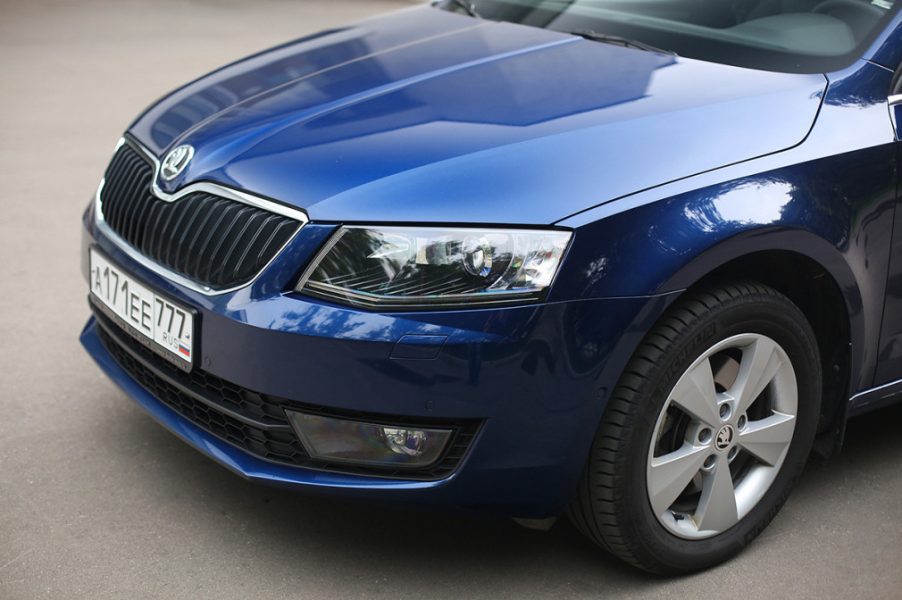
Number eight
The history of the Octavia family began in 1954, when the Skoda 440 Spartak model appeared on the market. The first modernization in 1957 brought a more powerful engine and index 445, the second, two years later - an updated body and the name Octavia. The name, derived from the Latin "octa", simply denoted the eighth model of the post-war period. Initially, the model was produced with a two-door sedan body, unusual by today's standards, and accommodated four. In 1960, the Czechs introduced a three-door station wagon, which was produced for another eleven years.
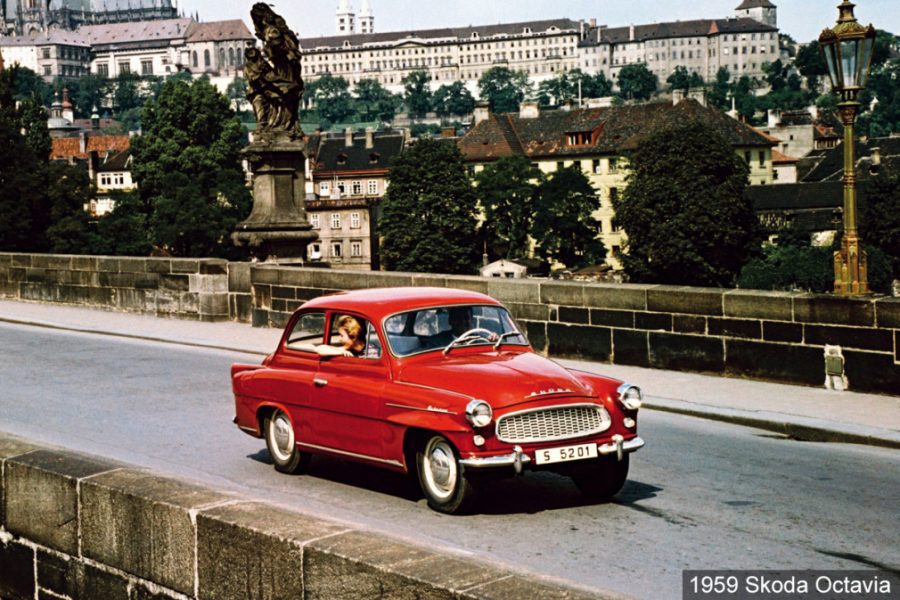
There were no direct heirs, and the rear-engined Skoda 1000MB, built on completely different principles, became the ideological follower. Rear-engined models were produced until 1990, when Skoda became part of the Volkswagen concern, and the model range was completely revised. The brand returned to the compact family car class in 1996 with the revived Octavia, which borrowed a modern front-wheel drive platform from Europe's best-selling fourth-generation Volkswagen Golf.
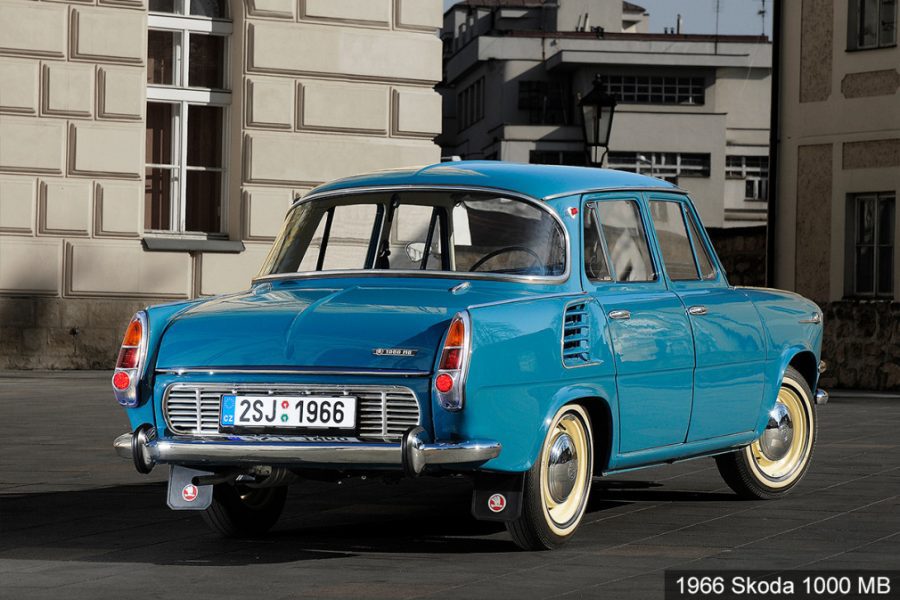
When designing the first modern Octavia, the Czechs immediately opted for practicality. The body of the liftback, which looks like a sedan, but also has a lifting fifth door, has come to the taste of the poorer markets of Eastern Europe. Plus the widest range of Volkswagen engines from 59 to 180 hp. and options with an all-wheel drive transmission - the model turned out to be so in demand that its release was not phased out until 2010, when an updated version of the second generation car was already sold on the market.

Octavia II on the platform of the fifth VW Golf appeared in 2004. A modernized version of 2009 was also produced at the Volkswagen Group plant in Kaluga. After restyling, Octavia began to be equipped with TSI series turbo engines and DSG boxes, although versions with old aspirated and classic "automatic machines" were still assembled and sold in Russia.
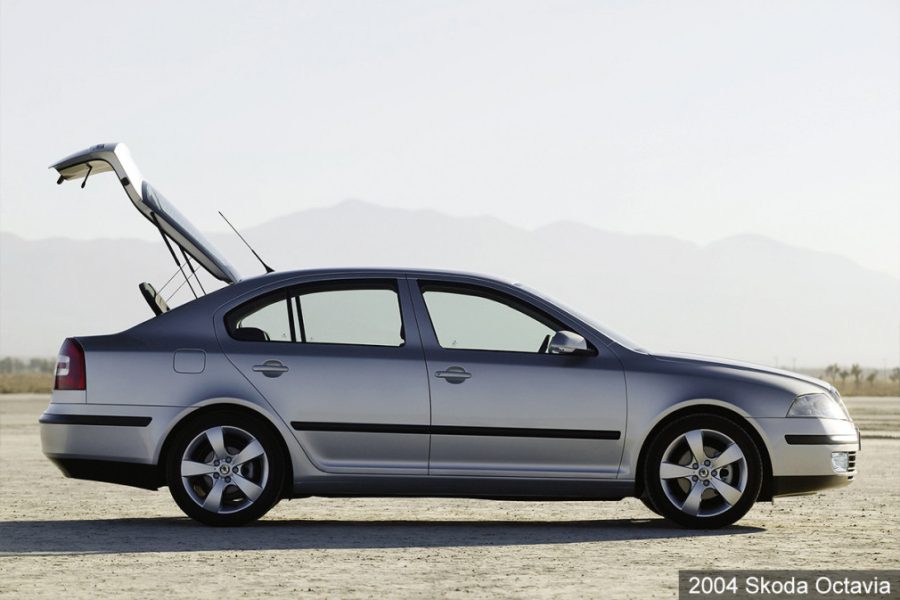
The third Octavia is based on the already modular MQB platform with turbo engines and DSG gearboxes. But for Russia, Egypt and China, the Czechs have kept the version with the old units. With the change of generation, the production of the model was moved from Kaluga to Nizhny Novgorod, where the third Octavia is assembled under a contract at the facilities of GAZ.
